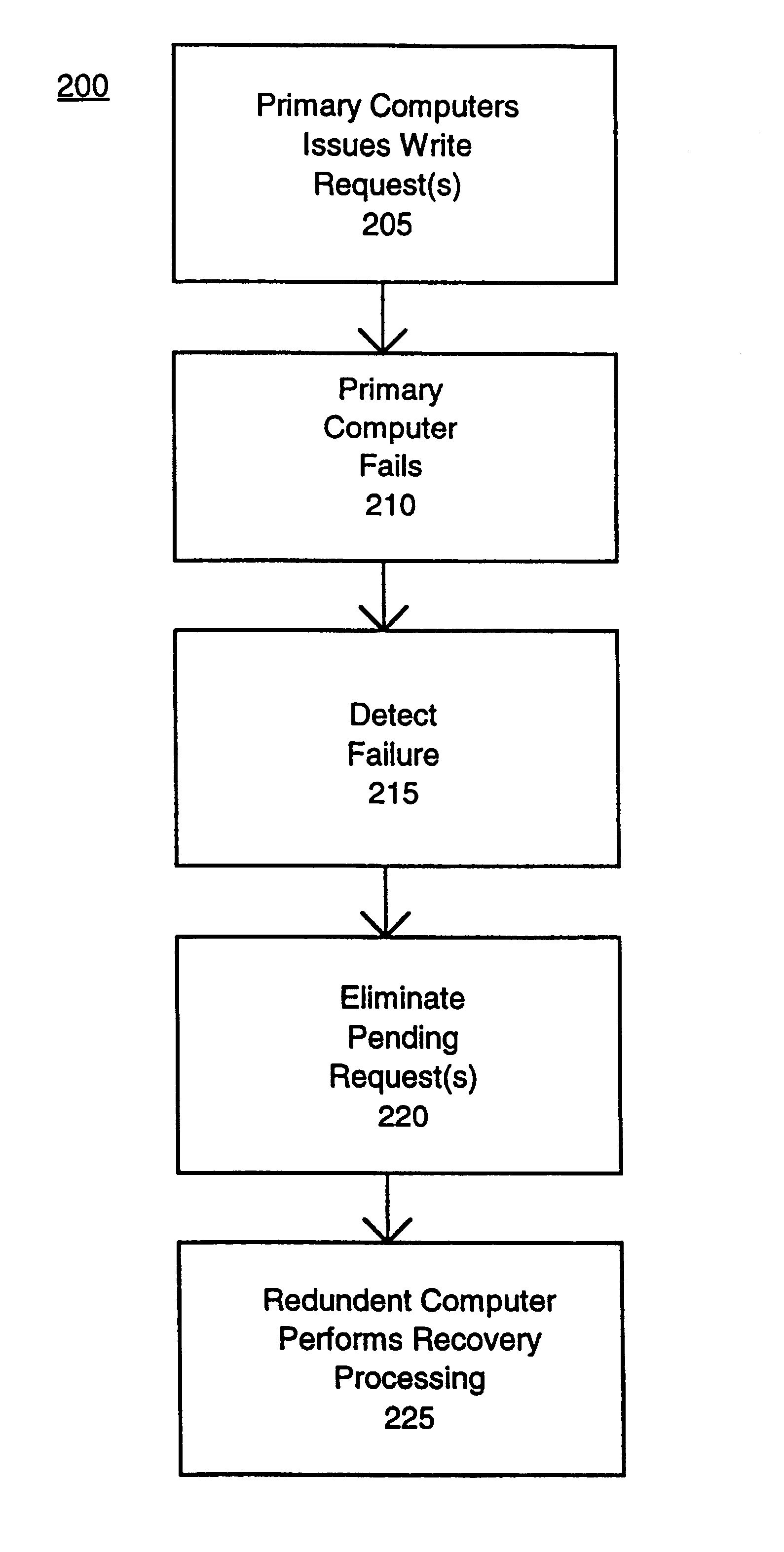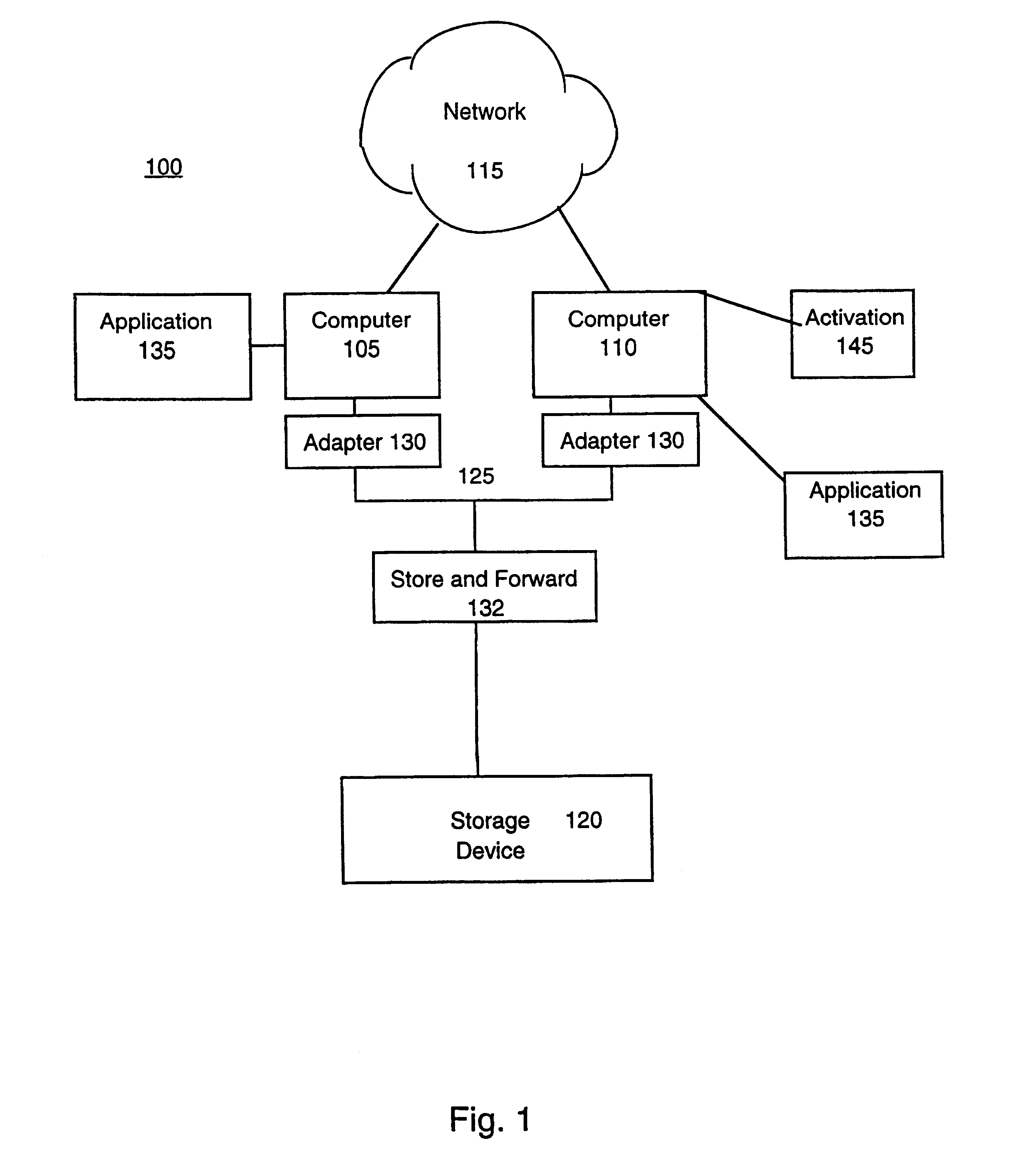Write request protection upon failure in a multi-computer system
- Summary
- Abstract
- Description
- Claims
- Application Information
AI Technical Summary
Benefits of technology
Problems solved by technology
Method used
Image
Examples
Embodiment Construction
FIG. 1 is a block diagram of a multi-computer system 100 having redundant computers 105 and 110. The computer 110, for example, may be a redundant to computer 105, which is a primary computer for a given application. In one configuration, the redundant computer 110 is not active until the primary computer 105 fails. In another configuration, both computers 105 and 110 are initially active, and upon failure of the computer 105, the computer 110 takes over one or more applications that had been executing on the computer 105. The computers 105 and 110 communicate with one another via a network 115. Additional computers not shown in FIG. 1 can also be present and connected to the network 115. The network 115 can be, for example, a cluster. The computers 105 and 110 are connected to a storage device 120, which is shared between the multiple computers in the multi-computer system 100. The storage device 120 can be a peripheral storage device, such as a disk drive, or an array of storage d...
PUM
 Login to View More
Login to View More Abstract
Description
Claims
Application Information
 Login to View More
Login to View More - R&D
- Intellectual Property
- Life Sciences
- Materials
- Tech Scout
- Unparalleled Data Quality
- Higher Quality Content
- 60% Fewer Hallucinations
Browse by: Latest US Patents, China's latest patents, Technical Efficacy Thesaurus, Application Domain, Technology Topic, Popular Technical Reports.
© 2025 PatSnap. All rights reserved.Legal|Privacy policy|Modern Slavery Act Transparency Statement|Sitemap|About US| Contact US: help@patsnap.com



